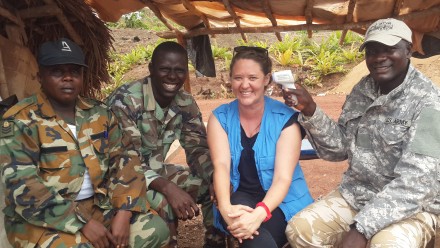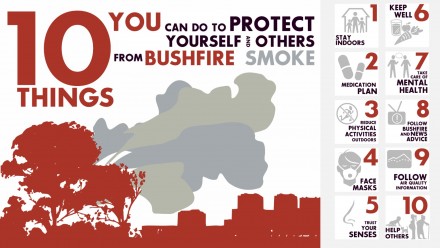Bushfire Smoke Risk Communication and Health Protection
The catastrophic Australian bushfires in late 2019 and early 2020 (the Black Summer), fuelled by climate change, have burned a total area of nearly the size of Ireland, resulting in the direct loss of human and animal life, and the destruction of thousands of properties and habitats. The fires, mainly in NSW and Victoria, killed at least 33 people, with millions more being exposed to hazardous bushfire smoke that lingered for weeks over large population centres. Sydney, Canberra and Melbourne, cities with typically good air quality, experienced record-breaking pollution with fine particulate matter (PM2.5) levels exceeding World Health Organization guidelines by over ten times on specific days.
The ANU Research School of Population Health, in collaboration with the School of Psychology and the Medical School, have developed a set of factsheets in a project led by Prof Vardoulakis on how we can protect others and ourselves from bushfire smoke. The factsheets have been translated into twelve languages by staff and students from the ANU School of Culture, History and Language, the ANU Centre for Arab and Islamic Studies, and the National Centre for Epidemiology and Population Health. Further work is ongoing to adapt these materials for other audiences, such as children, health workers, and other patient and professional groups.
View the factsheets and the translations.
We have also worked closely with local communities, health authorities, and the media to provide practical advice on exposure reduction and health messaging. Prof Vardoulakis’ strong engagement with the media and consistent messaging on air quality and health during the bushfire crisis reached an audience of around 8 million through contributions on all media platforms including national TV, radio, printed and online press, and social media.
To address these inconsistencies and gaps in knowledge and data, ANU has joined forces with other leading Australian universities to call for the establishment of an independent national expert committee on air pollution and health protection in an article published in the Medical Journal of Australia (MJA). Related podcasts on bushfire smoke and health protection are available by the MJA and the Australian Healthcare and Hospitals Association (AHHA).









